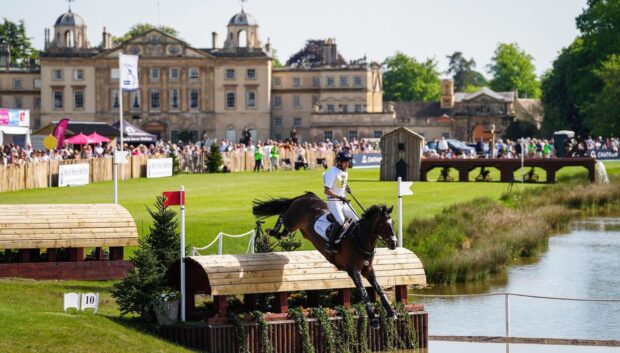Spillers' equine nutritionist Clare Barfoot provides one H&H forum user with some helpful advice on how to feed a new young horse
Q: Feeding a young horse: “I recently got a new horse. He is a six-year-old, 15.1hh Irish Sports Horse and is quite fine. He is currently fed a scoop of standard pony nuts morning and evening and I don’t think that is sufficient for him? I ride him four to five times a week and find he lacks energy. Though he is definitely getting fitter he lacks that drive that I think could be to do with him lacking energy from food. He is currently not going out a lot as the weather has been bad so other that the two feeds, he has haylage. I would like something that gives him a little more energy but won’t make him fizzy and maybe something that promotes muscle build up across his topline and back? I know that is a lot to ask and obviously I won’t change his feed too dramatically at first as he is still young and not really used to a proper feed. Please may I have some advice?”
A: Finding the right balance of condition and ridden energy can be tricky and one of the challenges people face when they get a new horse, but there are a few basics to understand before you go about changing too much.
Fundamentally energy and calories are the same thing so you can’t supply energy for ridden work without calories that may well be used to fuel weight gain or vice versa.
Continued below…
Related articles:
- H&H forum: find out what H&H readers suggested
- Tips for feeding your horse through the winter
- Read more expert feeding advice
The most obvious way of assessing whether or not your horse is receiving the appropriate level of energy in his diet is to evaluate how much condition he is carrying. The most objective way of doing this is by body condition scoring; for a quick and easy guide to how to do this click here. The resulting score will give you an idea if his diet is providing sufficient energy to cover his energy needs. Remember body condition scoring only evaluates external fat coverage not muscle development so bear this in mind as feeding alone will not increase muscle tone or topline — this is more influenced by appropriate schooling and making sure the diet has adequate levels of quality protein.
On the one to nine scale you are looking for your horse to be a five as this is described as ‘ideal’. If your horse is carrying too much fat you will need to reduce his energy intake while maintaining an adequate supply of vitamins and minerals in order to keep his diet balanced.
If he is not carrying enough condition you will need to increase the calories in his diet. This is best achieved by feeding an oil and fibre based diet such as Spillers Response Slow Release Energy Cubes alongside a high oil chopped fibre. Spillers Alfalfa-Pro Fibre is ideal as it is 10% oil and therefore will provide plenty of non-heating calories.
Continued below…
If you are happy that your horse is an ideal weight, changing his feed is unlikely to be the answer to giving him more ridden energy as this is influenced by his fitness level or ultimately his temperament.
At this stage I wouldn’t recommend feeding a high starch feed to increase the instant energy in his diet as this can increase the risk of many conditions such as gastric ulcers, colic, tying up and laminitis to name a few and in many cases doesn’t work to provide more ridden energy and can contribute to excitability or ‘fizzy’ behaviour. The best strategy is to work on his fitness levels and provide a balanced diet which maintains him in an ideal body condition.
For more advice on feeding horses call the Spillers Care-Line on 01908 22 66 26.




